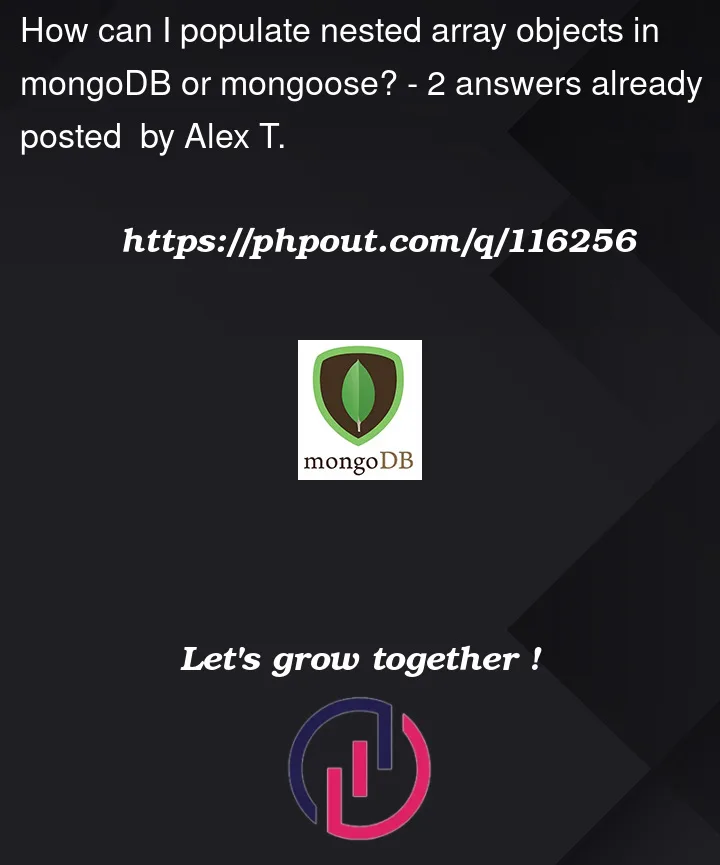I have an orders collection where each order has the following shape:
{
"_id": "5252875356f64d6d28000001",
"lineItems": [
{ productId: 'prod_007', quantity: 3 },
{ productId: 'prod_003', quantity: 2 }
]
// other fields omitted
}
I also have a products collection, where each product contains a unique productId field.
How can I populate each lineItem.productId with a matching product from the products collection? Thanks! 🙂
EDIT: orderSchema and productSchema:
const orderSchema = new Schema({
checkoutId: {
type: String,
required: true,
},
customerId: {
type: String,
required: true,
},
lineItems: {
type: [itemSubSchema],
required: true,
},
});
const itemSubSchema = new Schema(
{
productId: {
type: String,
required: true,
},
quantity: {
type: Number,
required: true,
},
},
{ _id: false }
);
const productSchema = new Schema({
productId: {
type: String,
required: true,
},
name: {
type: String,
required: true,
},
imageURL: {
type: String,
required: true,
},
price: {
type: Number,
default: 0,
},
});




2
Answers
I don’t know the exact output you want but I think this is what you are looking for:
The trick here is to use $lookup in an aggregation stage.
$unwindto deconstruct the array and can merge each id with the other collection.$lookupitself. This is like a join in SQL. It merges the desired objects with same ids.$mergeObjectsto get properties from both collections.Example here
With this query you have the same intial data but "filled" with the values from the other collection.
Edit: You can also avoid one stage, maybe it is clear with the
$setstage but this example do the same as it merge the objects in the$groupstage while pushing to the array.You can use the Mongoose populate method either when you query your documents or as middleware. However, Mongoose only allows normal population on the
_idfield.Using middleware you would still need to reconfigure your item schema to save the
_idfrom products. But this method would automatically call populate each time you query items:You could also declare your item schema within your order schema to reduce one layer of joining data: